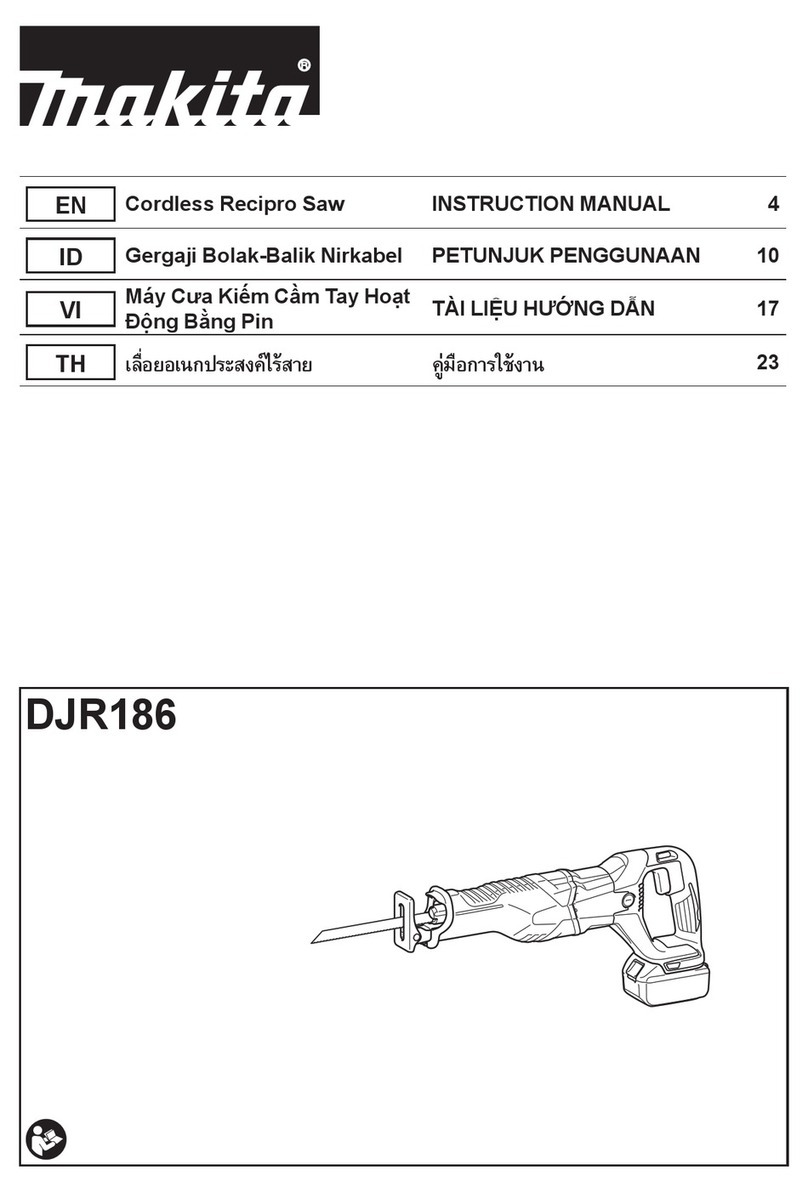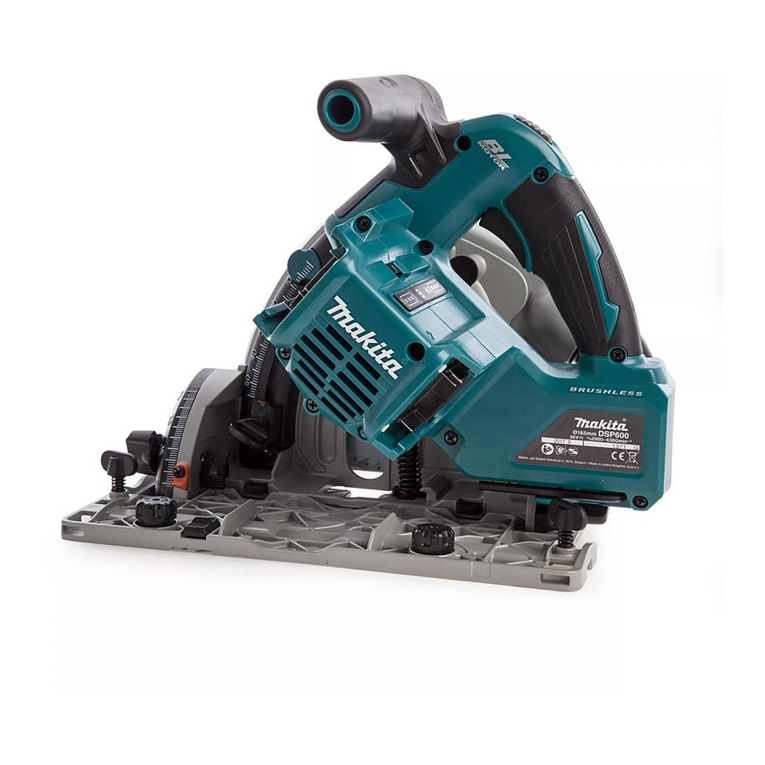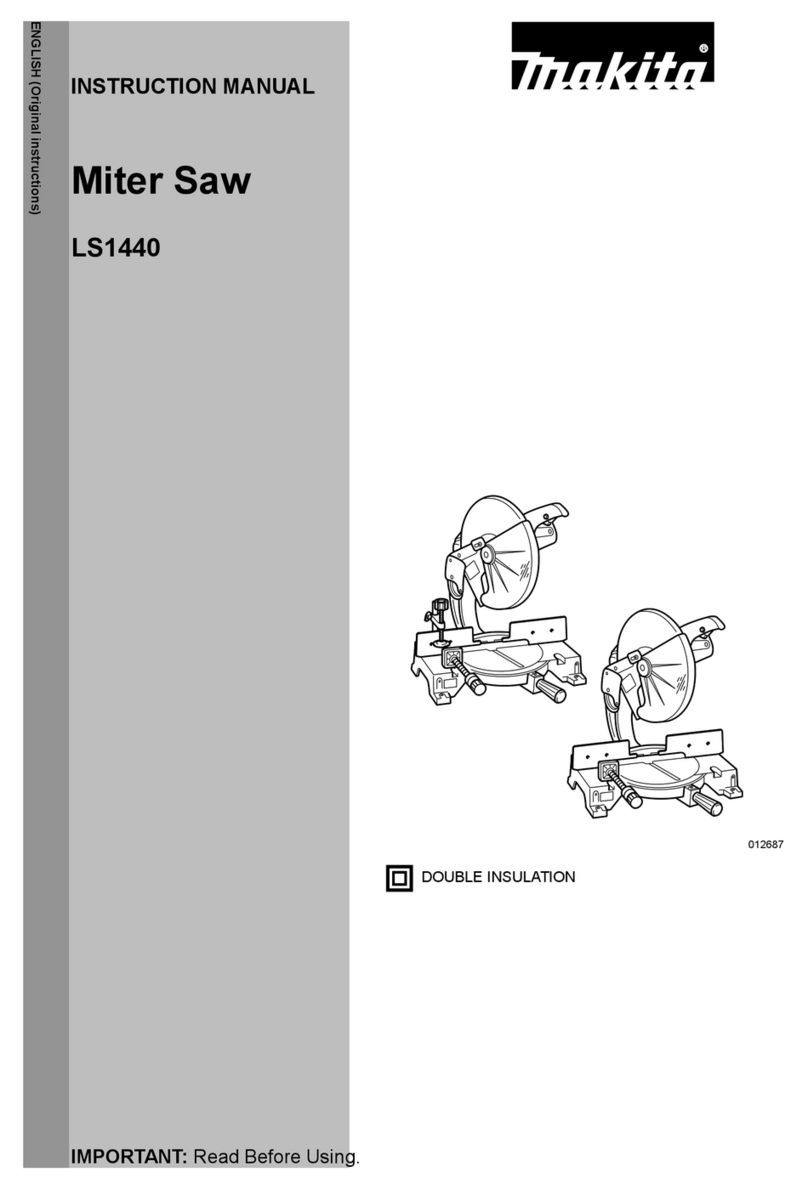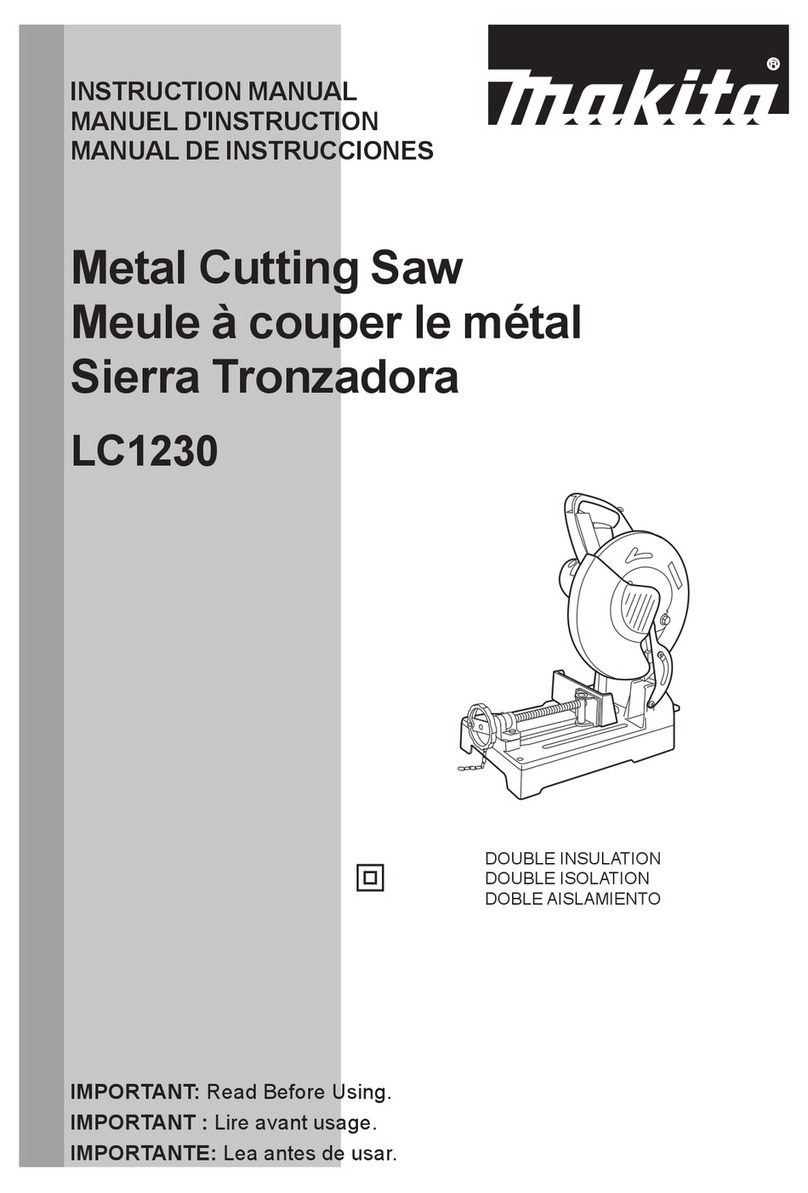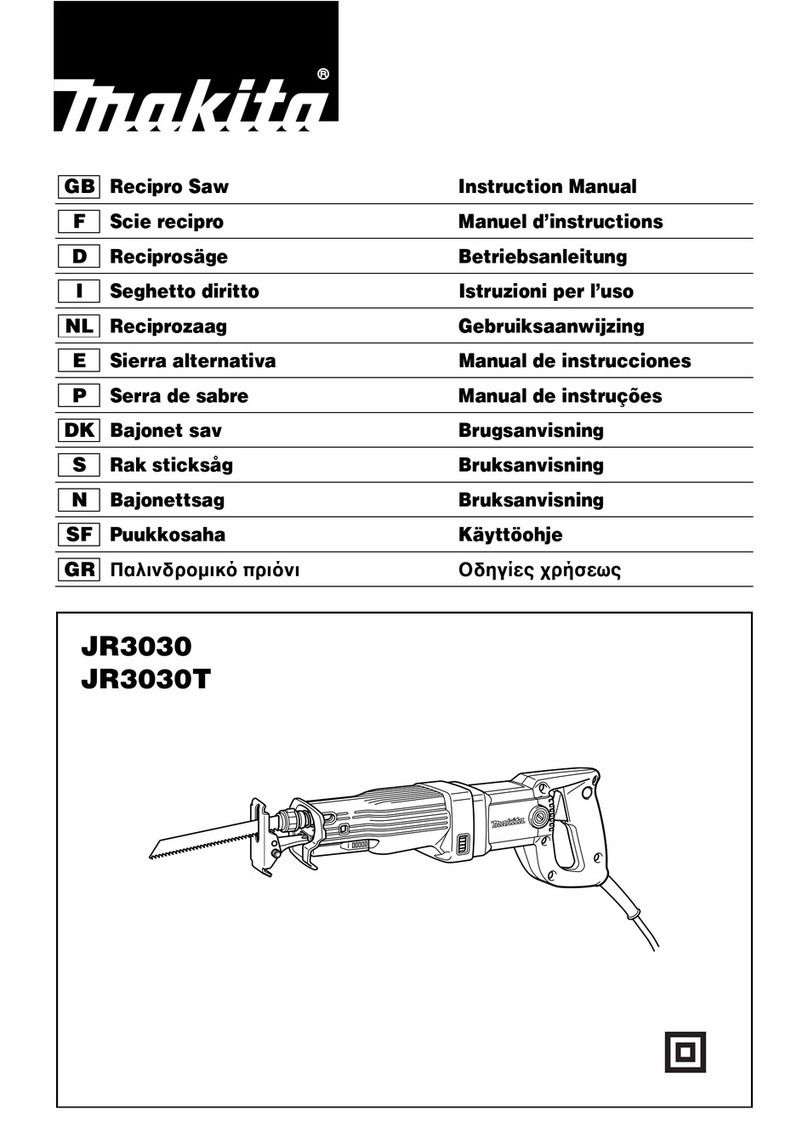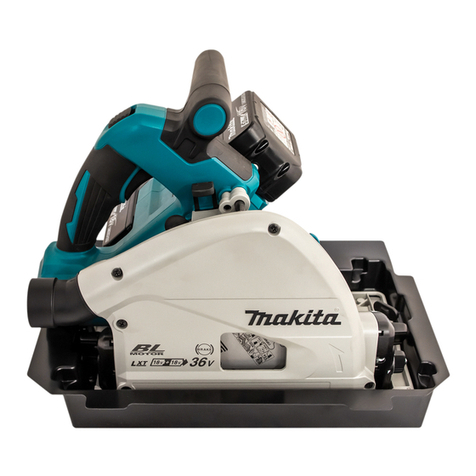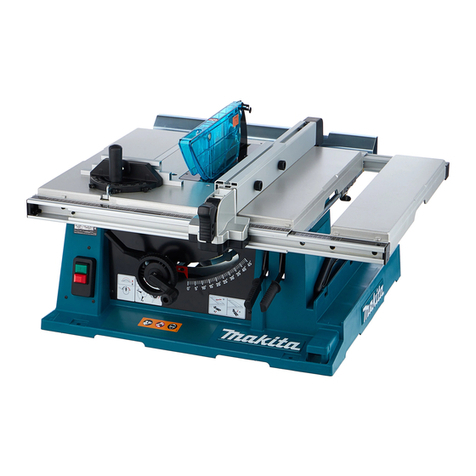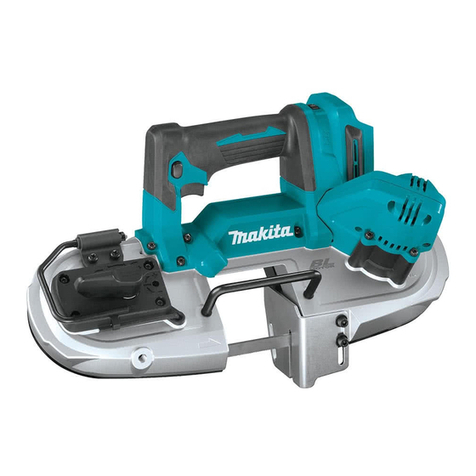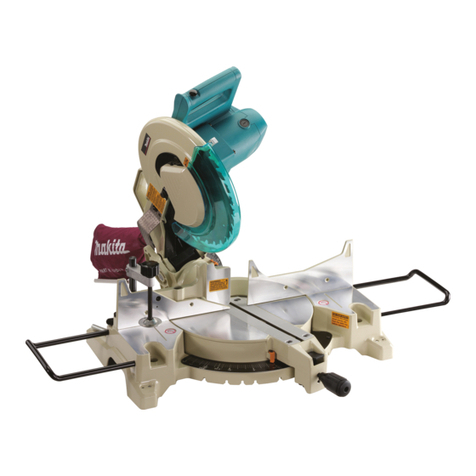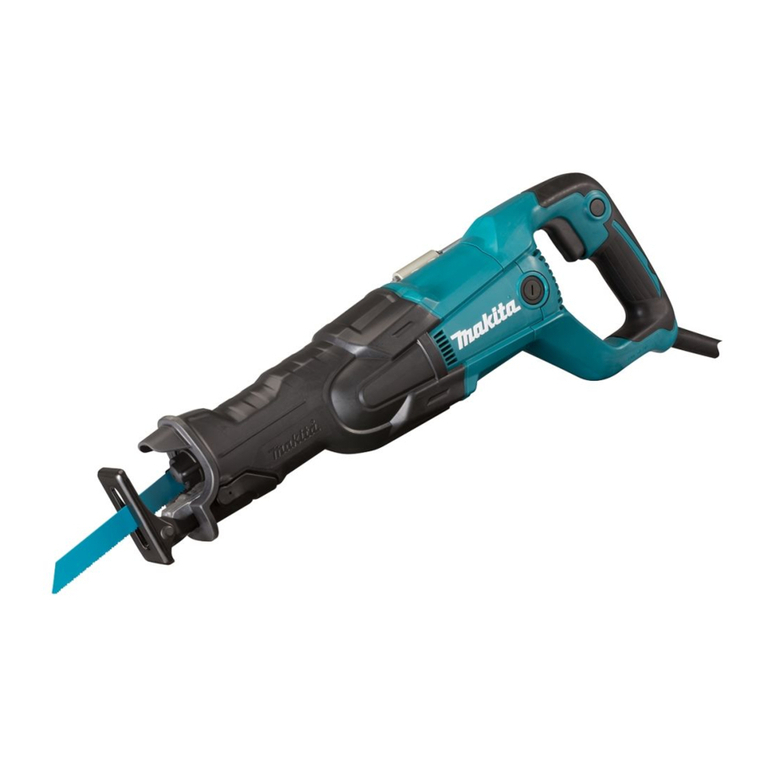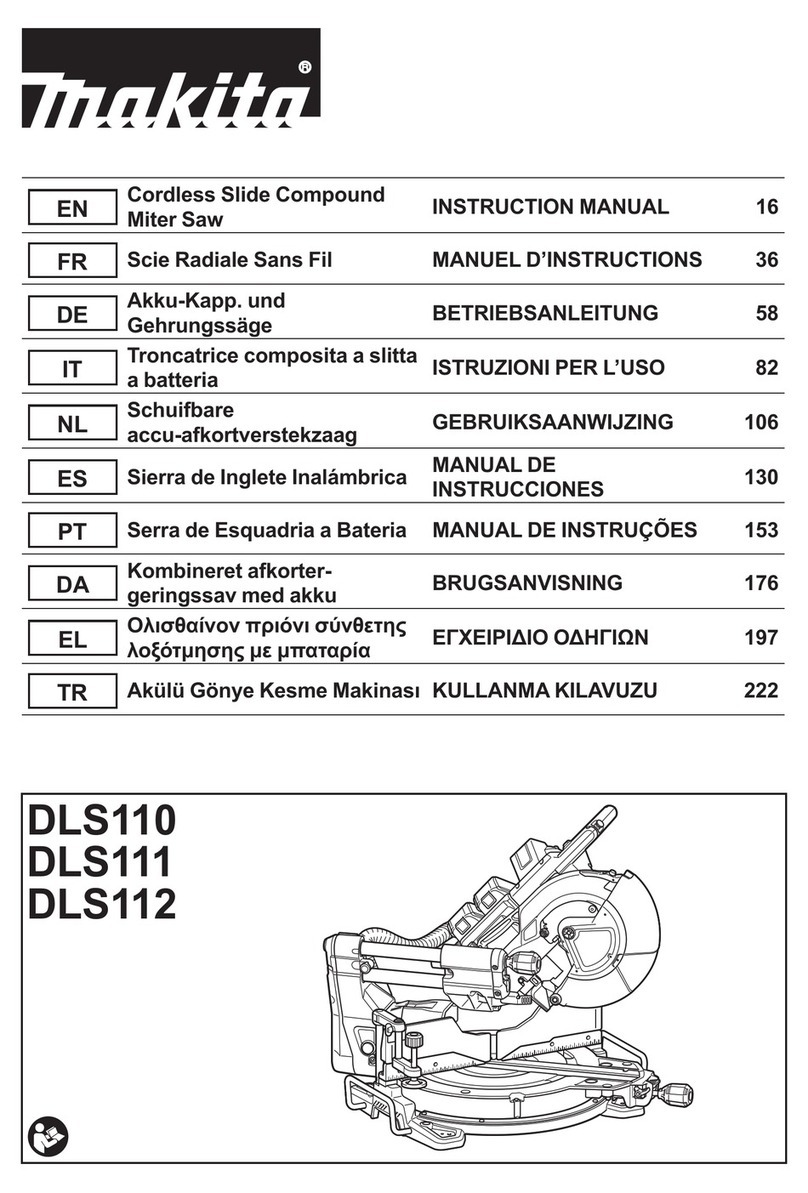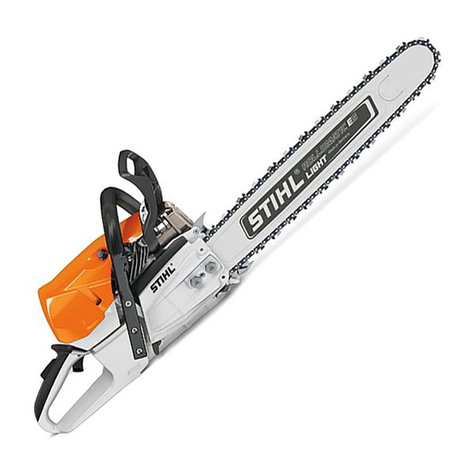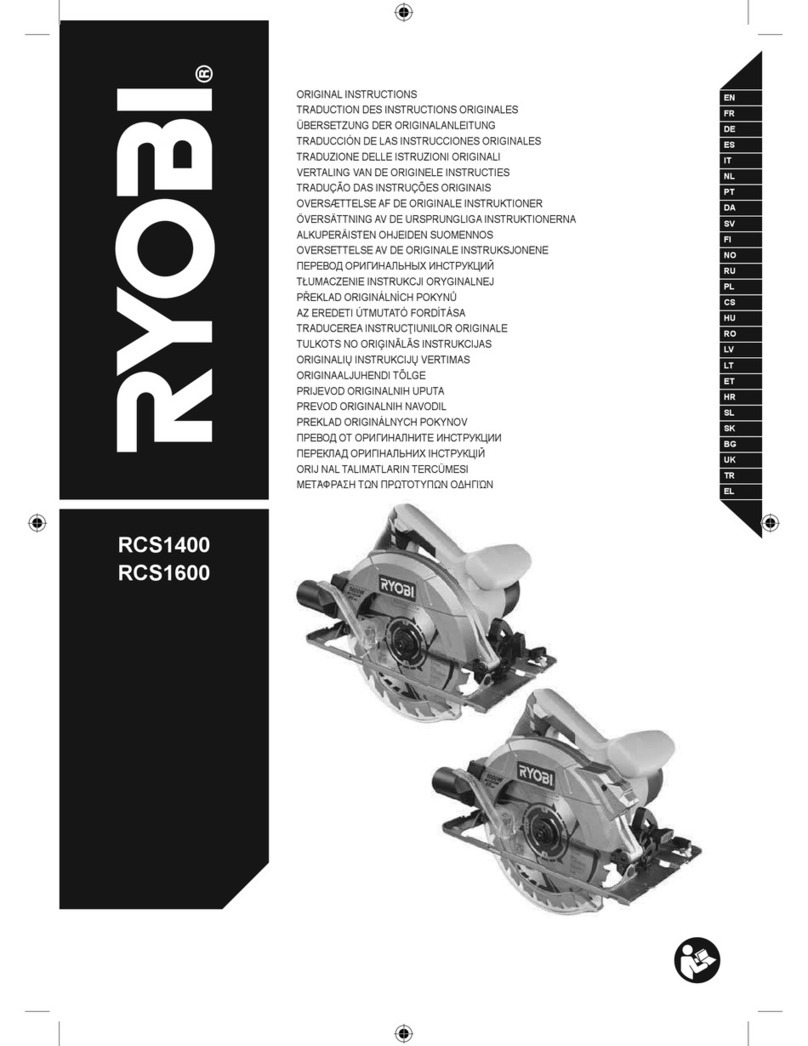15.
DISCONNECT TOOLS before servicing; when changing accessoriessuch as
blades, bits, cutters, and the like.
16.
REDUCE THE RISK OF UNINTENTIONALSTARTING. Make sure switch is
in
off position before plugging
in.
17. USE RECOMMENDED ACCESSORIES. Consult the owner's manual for
recommendedaccessories.The use of improper accessoriesmay causerisk
of injury to persons.
18.
NEVER STAND ON TOOL. Serious injury could occur
if
the tool istipped or
if the cutting tool is unintentionally contacted.
19.
CHECK DAMAGED PARTS. Before further use of the tool,
a
guard or other
part that is damaged should be carefully checked to determine that
it
will
operate properly and perform its intended function
-
check for alignment
of moving parts, binding of moving parts, breakageof parts, mounting, and
any other conditions that may affect its operation. A guard or other part
that
is damaged should be properly repaired or replaced.
20.
DIRECTION OF FEED. Feedwork into
a
blade or cutteragainst the direction
of rotation of the blade or cutter only.
21.
NEVER LEAVE TOOL RUNNING UNATTENDED. TURN POWER
OFF.
Don't
leave tool
until
it
comes to a complete stop.
22.
When servicing use only identical replacement parts.
23.
POLARIZED PLUGS.To reducethe
risk
of electric
shock,
this
equip-
ment hasa polarized
plug
(one blade
is
wider thanthe other). This plug
will fit
in
a
polarizedoutlet only oneway. Ifthe
plug
does
not
fit fully
in
the outlet, reversethe
plug.
If
it
still
does
not
fit, contacta qualified
electrician
to
installthe proper outlet. Do
not
changethe
plug
in
any
way.
VOLTAGEWARNING: Beforeconnecting thetooltoa power source (receptacle,
outlet, etc.) be sure the voltage supplied is the same as that specified on the
nameplate of the tool. A power source
with
voltage greater than that specified
for the tool can result
in
SERIOUS INJURY tothe user
-
as well as damage to
the tool. If in doubt, DO NOT PLUG IN THE TOOL. Using a power source
with
voltage less
than
the nameplate rating is harmful to the
motor.
3
